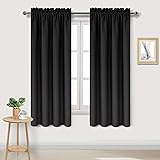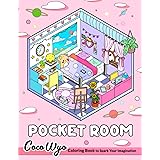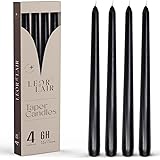The Biggest Decorating Mistakes: Expert Solutions for a Beautiful Home
Have you ever stepped back from a newly decorated room, only to feel a nagging sense that something isn’t quite right? It’s not necessarily ugly, yet it simply lacks cohesion or comfort. This common frustration often stems from overlooked design principles, leading to spaces that feel incomplete or chaotic rather than inviting. As discussed in the video above, many homeowners inadvertently fall victim to the eight biggest decorating mistakes, which can significantly impact both aesthetics and functionality.
Fortunately, transforming your living space into a haven of comfort and style is entirely achievable. By understanding these prevalent decorating pitfalls and implementing strategic solutions, you can save money, mitigate regret, and ultimately cultivate a home that authentically reflects your personal aesthetic and enhances your daily life. This guide will elaborate on the critical insights from the video, providing actionable steps to rectify these errors and empower your interior design journey.
Decoding the Decorating Dilemma: The Absence of a Cohesive Plan
Embarking on a decorating project without a clear strategy is akin to navigating a complex city without a map. Impulse decisions, often driven by appealing individual pieces or fleeting trends, inevitably lead to a disjointed and ultimately unsatisfying result. Much like grocery shopping without a list when you are famished, you accumulate many disparate items without the ingredients for a single coherent “meal.” Consequently, your budget may deplete rapidly, leaving you with a collection of nice things that fail to harmonize within the larger context of your room.
To circumvent this fundamental decorating mistake, adopt a structured five-step planning process before committing to any purchases. Initially, cultivate a mood board, collecting images of rooms, furniture, textures, and even natural landscapes that resonate with your desired aesthetic. This visual compilation will reveal underlying patterns and articulate your emerging style preferences. Furthermore, meticulously measure your space and draft an accurate floor plan, utilizing digital tools such as Magicplan or Floorplanner to visualize the layout effectively.
Subsequently, strategically position your anchor pieces—such as sofas, dining tables, or beds—as these foundational elements dictate the room’s primary function and scale. Only after these critical items are placed should you integrate smaller accents like side tables, lamps, and decorative accessories. Moreover, establish a firm budget early in the process and consistently employ filters when sourcing items, narrowing selections by size, material, and color to maintain your design vision. Finally, defer paint selection until the very end; choosing a paint color to complement existing furniture is significantly simpler than the inverse, as paint offers an infinite spectrum of shades compared to limited upholstery fabrics.
The Peril of Premature Purchases: Why Measuring Matters Most
While few individuals would purchase shoes in the incorrect size, the principles of proper scale and dimension frequently dissipate when selecting furniture. It is common to encounter a sofa on sale or an enticing table, acquire it, and then discover it disproportionately overwhelms or underwhelms the designated space. This phenomenon is often attributed to the deceptive scale of vast showrooms and warehouses, where a seemingly medium-sized sofa can appear gargantuan in a standard living room. This particular decorating mistake, which even seasoned designers occasionally make, can render an otherwise beautiful piece completely incongruous.
To prevent such costly missteps, integrating a detailed floor plan into your initial design phase is absolutely crucial. This provides a precise overview of your available space before any commitment to furniture acquisition. Commence by mapping out the exact placement for your primary anchor pieces, such as the sofa, dining table, or bed, along with their precise dimensional requirements. Then, fill in the remaining areas with accent pieces, like side tables and lamps, establishing clear size ranges for each item. For instance, your plan might specify a sofa length between 200 and 230 centimeters, providing a definitive shopping parameter.
If lingering doubts persist, a highly effective technique involves using painter’s tape to outline the intended footprint of furniture directly onto your floor. This tactile representation allows you to walk around the prospective pieces, gaining a realistic sense of their true scale and how they interact with the room’s pathways. Once these specific size ranges are determined, meticulously record them and adhere to these measurements as an unyielding guide during your shopping expeditions. The concrete data provided by these measurements offers an objective basis for decision-making, ensuring that even if you adore a particular item, a significant deviation from your required dimensions necessitates seeking an alternative or customized solution.
Escaping the Bland Trap: Injecting Personality and Contrast into Your Space
A significant decorating mistake involves playing it excessively safe, often driven by a fear of making errors. This cautious approach typically results in an abundance of neutral tones, boxy furniture, and repetitive material choices, culminating in a profoundly bland and uninspiring environment. A particularly egregious manifestation of this pitfall is furnishing an entire room with matching sets; this practice yields a one-dimensional aesthetic devoid of individual character. Consequently, it is advisable to limit matching pieces to a maximum of two, then introduce items from diverse sources to foster visual interest and depth.
Achieve cohesion among varied pieces by repeating specific colors, materials, or design details, such as brass accents or a consistent design period. This meticulous approach ensures that individual items complement each other while maintaining a compelling contrast. The identical principle applies to decorative elements; an abundance of matching cushions, vases, or accessories stifles dynamism within a space. Contrast, whether textural, tonal, or stylistic, is the cornerstone of an engaging interior. Furthermore, relying exclusively on manufactured materials like MDF, polyester, or plastic often results in a lack of textural richness, which can contribute to a sterile feel.
Conversely, natural materials such as linen, cotton, stone, and timber inherently possess unique textures and variations that inject character and depth into a room. These organic elements, with their subtle imperfections and tactile qualities, impart a layered and luxurious feel. Therefore, the most effective strategy to avoid a sterile or “cookie-cutter” aesthetic involves actively shopping around. Resist the temptation of convenience by furnishing an entire room from a single retailer. Instead, explore multiple brands and sources; this diversified approach naturally compels you to consider a broader spectrum of options, leading to an organically curated space rich in compelling contrasts and personal expression.
Optimizing Spatial Harmony: Cultivating Flawless Room Flow
While often imperceptible, the flow of a room profoundly dictates its livability and comfort. An inadequately planned layout can generate daily friction—such as constantly maneuvering around a coffee table or bumping into furniture—leading to subtle, persistent annoyance. Conversely, a well-orchestrated flow ensures effortless movement and intuitive navigation, enhancing the overall user experience. The good news is that optimizing room flow is not overly complex once key principles are understood and applied strategically.
Commence by meticulously mapping your primary pathways. Visualize the most direct routes from each doorway to the various functional zones or other rooms, essentially drawing invisible lines across your floor plan. These essential circulation paths must remain unobstructed and ideally measure between 30 to 36 inches wide, ensuring comfortable passage without the need for zigzagging or accidental collisions. Additionally, always account for adequate functional clearance; dining chairs require sufficient space to be pulled out, recliners need room to extend fully, and cabinet doors must open unimpeded. Ignoring these clearances compromises the utility of your furniture and fixtures.
However, an important caveat is to resist the impulse to push all furniture against the walls in an attempt to maximize open space. This common misstep often creates vast, unused “dead zones” in the center of the room, rendering it cold and unwelcoming, much like a sterile waiting room. Instead, intentionally pull furniture inwards, grouping pieces to define distinct conversation areas. This strategic placement not only fosters intimacy and facilitates easy communication but also optimizes the room’s aesthetics and comfort, creating inviting pockets within the larger space.
Illuminating Your Interior: Mastering Layered Lighting Design
Lighting stands as one of the most transformative elements in interior design, yet it is frequently approached as an afterthought. A prevalent decorating mistake involves an over-reliance on ubiquitous recessed can lights, which, while functional, often result in a flat, uninspired illumination reminiscent of builder-basic installations. The key to creating a dynamic and inviting atmosphere lies in the strategic layering of different light sources, a technique designers categorize into three primary types.
Ambient lighting provides the general, overall glow of a room, often achieved through fixtures like pendants, chandeliers, or lamps equipped with shades. Task lighting, conversely, is specifically designed to aid in activities such as reading or cooking, exemplified by adjustable floor lamps beside a chair or under-cabinet strip lighting in a kitchen. Lastly, accent lighting serves a decorative purpose, highlighting architectural features, artwork, or shelves through fixtures like picture lights or LED strips. If these categories seem complex, consider lighting at three distinct levels: above your head (e.g., pendants, chandeliers), at eye level (e.g., wall sconces, tall floor lamps), and below eye level (e.g., table lamps, shorter floor lamps). Integrating a thoughtful mix across all three levels instantly imbues a room with depth, warmth, and versatile functionality.
Furthermore, attention to light temperature, measured in Kelvin (K), is paramount. A bulb emitting 4,500 Kelvin, which produces a cool, bluish light, is entirely unsuitable for a bedroom, as it can evoke a stark, hospital-like ambiance. For spaces intended for relaxation, such as bedrooms and living rooms, aim for bulbs under 3,000 Kelvin, which cast a warm, inviting glow. In more functional areas like kitchens and bathrooms, temperatures up to 4,000 Kelvin are acceptable, providing brighter, more neutral light. Anything above 4,000K is typically reserved for utility spaces like garages, not residential living areas. While investing in quality lighting can be an initial expense, it represents one of the highest ROI upgrades in any home. Even with impeccable furniture and a flawless layout, poor or harsh lighting can severely detract from the entire atmosphere, emphasizing the necessity of integrating lighting planning early in your design process.
Beyond the Hype: Cultivating Your Authentic Personal Decorating Style
The allure of trends presents a significant decorating mistake, often ensnaring individuals both consciously and unconsciously. Conscious trend following occurs when social media inundates you with a particular aesthetic, prompting the desire for similar items. While inspiration is valuable, it is crucial to pause and genuinely assess if the item resonates with your intrinsic preferences or if it is merely a fear of missing out driving the decision. Acquiring items solely because “everyone else is” frequently leads to dissatisfaction when the trend inevitably wanes.
Unconscious trend following, however, proves even more insidious, as market availability and digital feeds subtly shape perceptions of what is desirable. This pervasive influence explains the homogeneity often observed in homes featuring similar gray palettes, shiplap walls, or identical motivational signs. To counteract this pervasive influence, cultivate a profound clarity regarding your personal inclinations. Systematically collect images of various spaces and meticulously document every element that genuinely captures your attention—be it a specific color, a unique shape, or a particular material. This curated list becomes your personal style filter when shopping; if an item deviates from these criteria, it is likely mere noise.
Another powerful defense against the trend trap involves considering the inherent architectural “bones” of your home. Acknowledge its era, existing architectural details, and inherent character. Subsequently, select pieces that complement these foundational elements rather than clashing with them. This harmonious approach ensures that even if a chosen item happens to be currently fashionable, it will feel authentically integrated and intentional within your home’s context, rather than forced. Remember, a comprehensive design plan serves as a critical safeguard against impulse purchases, which are often dictated by whatever is currently trending. Exercise particular caution with large-ticket or permanent fixtures, such as tiles, countertops, or sofas, given their substantial cost and permanence. Always test materials, sit on furniture, and observe finishes under various lighting conditions before committing. Trends are ephemeral, but your comfort and satisfaction with your home are enduring necessities.
Releasing the Regret: Why Living with Decorating Mistakes is Costly
One of the most profound decorating mistakes involves stubbornly living with choices you actively dislike for extended periods. Whether it is a paint color that always felt off, an uncomfortable sofa, or a regrettable chair purchase, these daily reminders subtly erode your comfort and satisfaction within your own home. This situation is analogous to walking with a persistent pebble in your shoe; while you might initially ignore it, true comfort remains elusive until the irritant is removed. Many individuals hesitate to rectify these mistakes due to the initial financial outlay, reasoning, “I spent a thousand dollars on that sofa; I cannot simply discard it.”
However, this line of reasoning exemplifies the “sunk cost fallacy,” a cognitive bias where past investments influence future decisions despite diminishing returns. The money initially spent is already gone, irrespective of future actions. The crucial decision becomes whether to continue paying a daily price in frustration and discomfort merely to justify a past financial decision. Instead, consider selling the item and reinvesting the proceeds into something that genuinely enhances your living space. Alternatively, donating it can provide a valuable resource for others and alleviate the burden of an unwanted object. Either approach liberates both your home and yourself from the psychological weight of a design error.
Your home should serve as a sanctuary, fostering feelings of well-being and contentment, rather than guilt or dissatisfaction. The moment you acknowledge that something in your home feels fundamentally wrong, initiate a plan to effect a change. Prioritizing your comfort and happiness within your environment is a wise investment. Future you will undoubtedly express gratitude for every proactive step taken to transform a regretted purchase into a source of daily joy and comfort, reinforcing the principle that a well-designed home is integral to a well-lived life.
Engaging Every Sense: Crafting a Truly Immersive Home Environment
When approaching interior design, the primary focus overwhelmingly gravitates towards visual aesthetics. However, sight constitutes only one of our five senses, and truly comfortable, immersive spaces transcend mere visual appeal. Consider your most cherished environments—a cozy coffee shop, a serene spa, or an exquisite restaurant—they all meticulously integrate sensory details beyond what is immediately visible. These places often feature a distinctive signature scent, carefully curated background music, and an obsessive attention to tactile elements, such as the texture of seating, the weight of glassware, or the softness of linens. Regrettably, in our own homes, these crucial sensory layers are often neglected due to an overemphasis on purely visual elements.
To cultivate a home that resonates on a deeper sensory level, strategically incorporate elements for each sense. For scent, consider a high-quality diffuser, scented candles, or subtle room sprays. Do not underestimate the profound impact of simply opening windows to invite fresh air or ensuring proper ventilation in kitchens and bathrooms. A clean-smelling home is foundational to comfort, as unpleasant odors can subtly influence mood and stress levels. Regarding sound, a simple Bluetooth or Wi-Fi speaker can dramatically alter the atmosphere through music, providing a versatile tool for setting any desired mood, from energizing to tranquil. Furthermore, actively minimize unwanted noise by considering options like rugs, heavy drapes, or even sound-absorbing panels.
Lastly, pay acute attention to the sense of touch. Engage with the textures of items you interact with most frequently: the smoothness of door handles, the weight of light switches, the softness of a throw blanket, or the ergonomic feel of your dinnerware and mugs. These seemingly minor touch points collectively wield a substantial influence on the overall sensory experience of your home. By consciously integrating thoughtful considerations for scent, sound, and touch alongside visual design, your space transcends mere appearance to become a truly immersive, deeply comfortable, and profoundly enjoyable environment. A home that engages all senses is a masterclass in holistic interior design, elevating everyday living far beyond superficial decorating mistakes.











